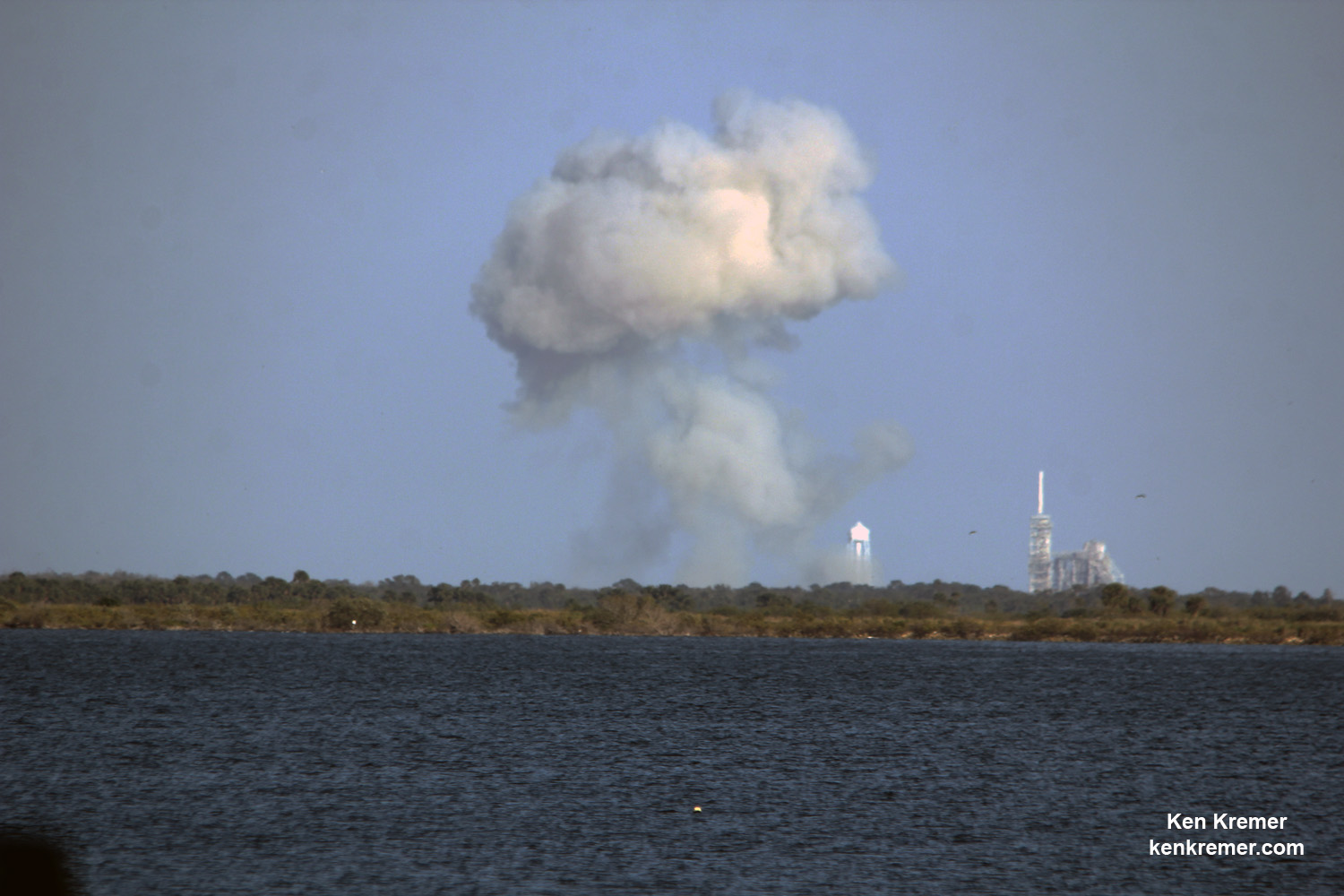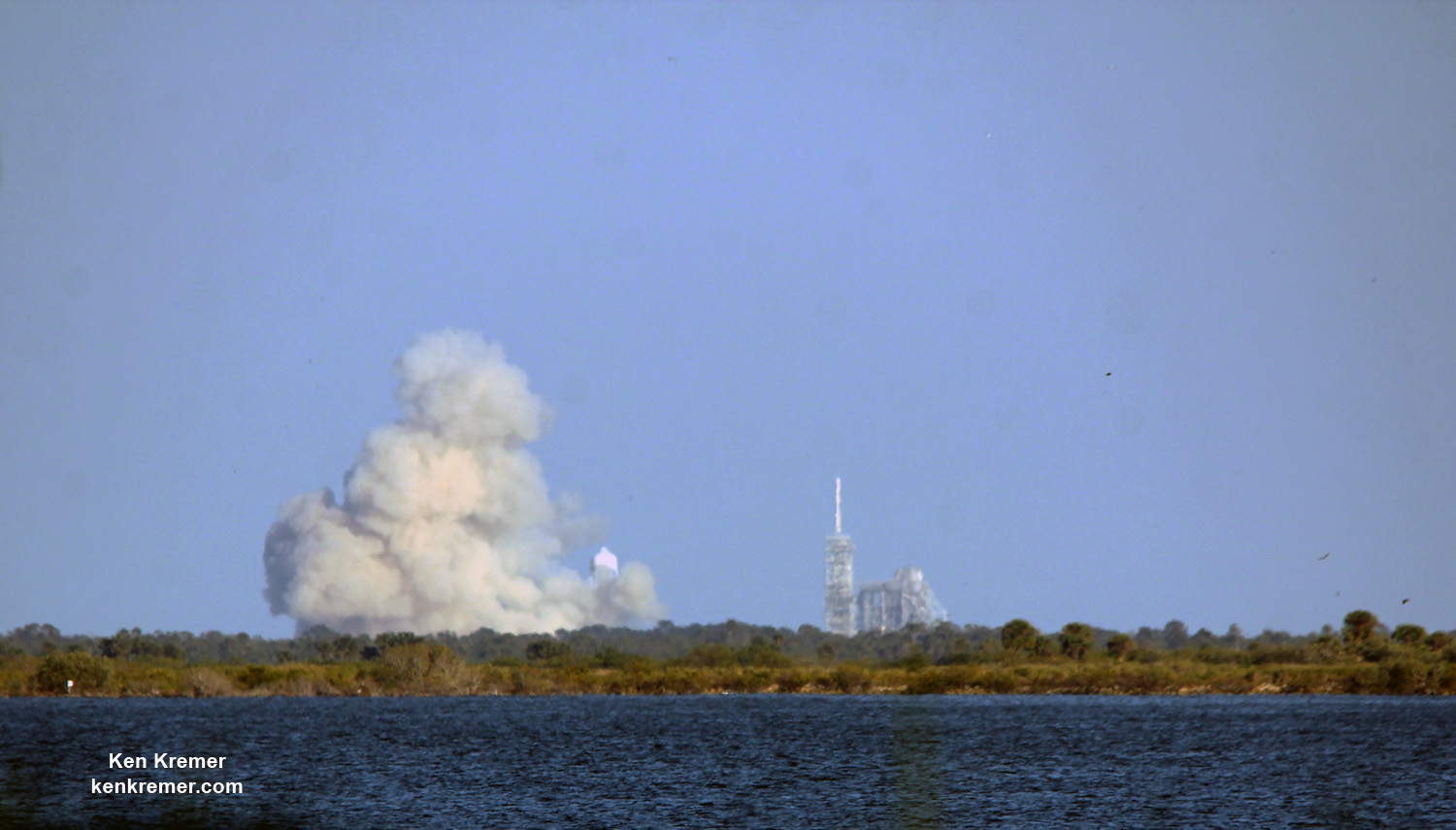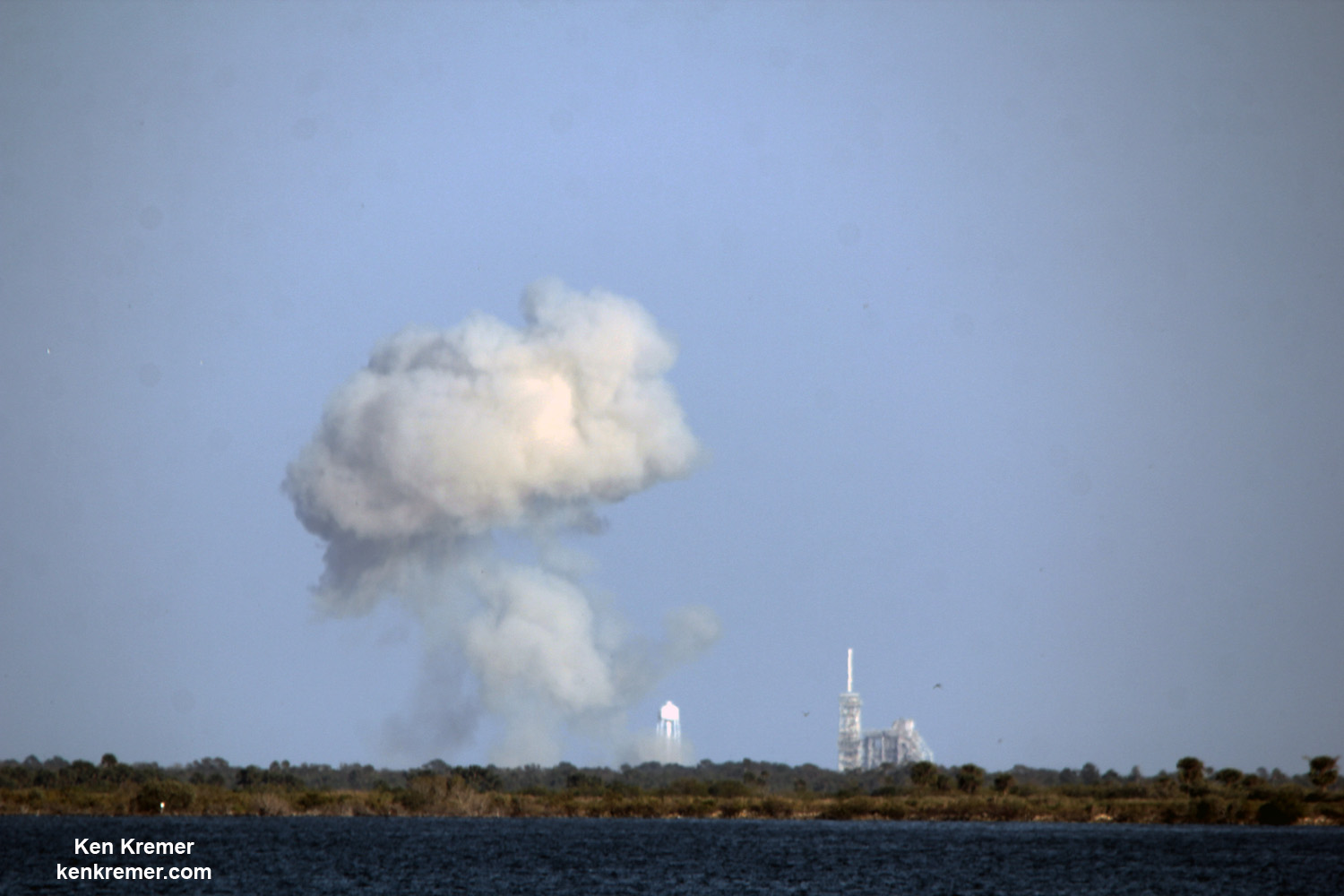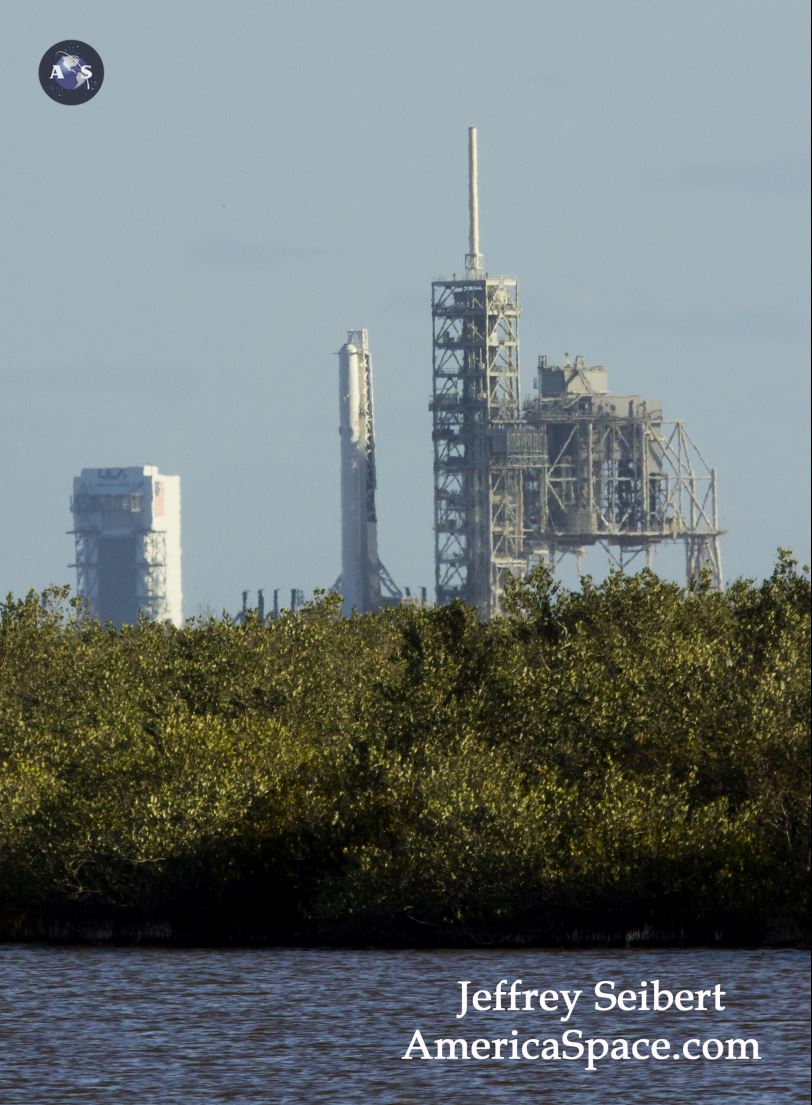
First SpaceX Falcon 9 rocket atop Launch Complex 39-A at the Kennedy Space Center comes to life with successful static hot fire test at 430 p.m. on 12 Feb 2017 as seen from Space View Park, Titusville, Fl. This is the first rocket to stand on pad 39A since the retirement of NASA's Space Shuttles in July 2011. Credit: Ken Kremer/Kenkremer.com
SPACE VIEW PARK/KENNEDY SPACE CENTER, FL - For the first time in more than half a decade, a rocket came to life at NASA's Kennedy Space Center when a SpaceX Falcon 9 breathed her first fire at historic pad 39A today, Sunday, Feb. 12 - successfully completing a critical static test firing of the first stage engines that opens the door to a launch to the space station next weekend for NASA.
The hot fire test generated a huge plume of smoke exhausting out the north side of the flame trench of Launch Complex 39A at approximately 4:30 p.m. EST, Feb. 12.
The hold down engine test with the erected rocket involved the ignition of all nine Merlin 1D first stage engines generating some 1.7 million pounds of thrust.
The Merlin 1D engines fired for about 3 seconds while the two stage rocket was restrained on the pad.
SpaceX confirmed the test via social media shortly after it took place.
"First static fire test of Falcon 9 at historic launch complex 39A completed in advance of Dragon's upcoming mission to the @Space_Station," SpaceX tweeted in a very brief announcement.

First SpaceX Falcon 9 rocket atop Launch Complex 39A at the Kennedy Space Center comes to life with successful static hot fire test at 430 p.m. on 12 Feb. 2017 as seen from Space View Park, Titusville, Fl. Liftoff is slated for no earlier than 18 Feb. 2017. Credit: Ken Kremer/Kenkremer.com
The test confirms that both the first stage engines and the rocket are suited for liftoff. Over the past few days, launch teams also tested the pad equipment, raised and lowered the rocket and conducted fit checks of the rocket at the pad.
The test had been delayed several days as technicians coped with issues until all was right to carry out the static fire test.
The positive outcome paves the path for a Falcon 9.Dragon blastoff as soon as next Saturday.
This marks the first time any rocket has stood on pad 39A and fired its engines since the retirement of NASA's Space Shuttles in July 2011 on the STS-135 mission to the space station.

First SpaceX Falcon 9 rocket atop Launch Complex 39A at the Kennedy Space Center comes to life with successful static hot fire test at 430 p.m. on 12 Feb. 2017 as seen from Space View Park, Titusville, Fl. Liftoff is slated for no earlier than 18 Feb. 2017. Credit: Ken Kremer/Kenkremer.com
Liftoff of the Falcon 9 is slated for no earlier than next Saturday, 18 Feb 2017 on a critical cargo flight for NASA to deliver over two and a half tons of science and supplies to the six person crew living and working on the International Space Station (ISS).
The rocket - minus the payload comprising the Dragon cargo spacecraft - was rolled out of the SpaceX processing hangar at the perimeter fence and then up the incline to the top of pad 39A on Friday morning using a dedicated transporter-erector.

First SpaceX Falcon 9 rocket stands erect atop Launch Complex 39-A at the Kennedy Space Center on 10 Feb 2017 as seen from Playalinda Beach, Fl. This is the first rocket to stand on pad 39A since the retirement of NASA's Space Shuttles in July 2011. Liftoff to the ISS is slated for 18 Feb 2017 on the CRS-10 resupply mission for NASA. Credit: Jeff Seibert/AmericaSpace
After the successful completion of the static fire test, the booster will be rolled back to the big processing hangar and the Dragon resupply ship will be integrated on top.
The historic NASA launch pad was formerly used to launch both America's space shuttles and astronauts on Apollo/Saturn V moon landing missions.
Dragon will be loaded with more than 5500 pounds of equipment, gear, food, supplies and NASA's Stratospheric Aerosol Gas Experiment III (SAGE III) ozone mapping science payload.
Pad 39A has lain dormant for launches for nearly six years since Space Shuttle Atlantis launched on the final shuttle mission STS 135 in July 2011.
Stay tuned here for Ken's continuing Earth and Planetary science and human spaceflight news.
Ken Kremer
No comments:
Post a Comment